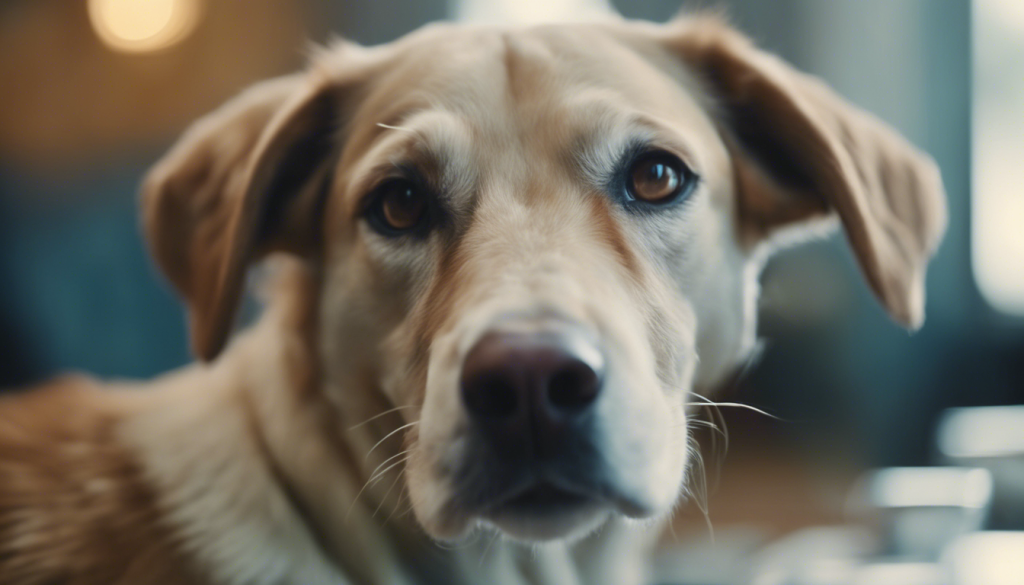The Science of Canine Senses – How Dogs Experience the World
The sensory architecture of dogs, encompassing a remarkable interplay of anatomical features, establishes a fascinating foundation for their interaction with the world, evoking both admiration and intrigue. As guardians and companions, pet owners find themselves in a position of profound responsibility, as understanding these intrinsic capabilities can significantly enhance a dog’s quality of life. Each nuanced aspect of a canine’s sensory anatomy contributes not merely to survival but enriches the emotional tapestry of the bond shared with humans.
To comprehend the marvel of canine senses, one must first appreciate the physiological distinctions that set dogs apart from their human counterparts. The canine olfactory system, for instance, is extraordinarily sophisticated, housing an estimated 300 million olfactory receptors in comparison to the mere 5 million found in humans. This profound contrast renders the canine sense of smell not simply superior but almost transcendent, allowing dogs to detect scents at dilutions as minute as one part per trillion. Thus, when training for behavior or encouraging social development, one observes how this heightened olfactory sensitivity can be harnessed for positive reinforcement, turning ordinary tasks into enriching scent-training exercises.
This olfactory prowess is complemented by a visual system that, while less acute in terms of color perception, accommodates a vast array of light conditions and motion detection, particularly useful for tracking movement. Dogs are dichromatic, perceiving two colors primarily—blue and yellow—contrasting with the more complex spectrum accessible to humans. This insight becomes invaluable when considering activities such as fetch or agility training, where a strategically chosen color of equipment can mitigate confusion and enhance engagement.
Furthermore, the intricate structure of a dog’s ears reveals another layer of sensory acuity. With over 18 muscles facilitating the movement of their ears, canines can pivot and tilt with remarkable agility, capturing sounds in all directions and discerning frequencies as high as 65,000 Hertz—far surpassing human capabilities. This acoustic sensitivity is particularly pertinent during training sessions; capitalizing on the sounds that engage and excite dogs can establish a more communicative and effective learning environment.
To embrace the responsibilities of pet parenting fully, it’s essential to engage with these sensory modalities holistically. One might consider the implementation of sensory games in daily routines, providing both stimulation and enrichment. For instance, using scent trails when introducing a new environment can help alleviate anxiety and foster confidence. Likewise, employing audible markers or cues during obedience training can strengthen communication and mutual understanding, forging a deeper bond reinforced through trust and companionship.
Additionally, recognizing the limitations and strengths of each sense can alleviate common challenges; for example, when a dog appears distracted or disinterested during training, an appraisal of their sensory landscape may reveal overstimulation or a lack of motivational stimuli. Adjusting the approach to incorporate sensory elements that resonate with a dog’s unique preferences can not only enhance focus but also refine the training experience into a joyous cooperative endeavor.
Engaging deeply with these perceptual frameworks not only enriches the lives of dogs and their human companions but also enriches our own understanding of the magnificent creatures we choose to bring into our lives. Each attribute, each sensory nuance, serves as a reminder that the world is experienced rather differently by our canine friends, urging us to tread thoughtfully in crafting an environment that celebrates their inherent abilities while addressing their emotional and physical needs. In doing so, we pave the way for a lifelong partnership grounded in mutual respect, understanding, and love, illuminating the profound connection that transcends mere companionship.

Olfactory Dominance: The Power of Smell
The canine olfactory world, a veritable tapestry of scents, whispers tales unseen and unspoken to human ears. It’s through this extraordinary sense that dogs navigate their environment with an artistry that escapes mere human comprehension. In the realm of olfactory dominance, one must not only acknowledge the anatomical wonders behind this extraordinary skillset but also appreciate how it shapes canine behavior, informs training methods, and enhances the rich companionship shared with these noble beings.
Ponder, if you will, the act of approaching a dog after a long day apart. The tail may wag, the body may surge towards you with uncontainable joy, but what lies beneath that exuberance is an orchestra of olfactory information—a symphony composed of every scent you have accumulated throughout your day. The unique fragrance of the park, the lingering aroma of a fellow human, or even the faint whiff of dinner wafting from a neighbor’s abode—all collate into an exquisite narrative that your dog eagerly interprets. In this rich olfactory landscape, every scent tells a story, revealing your past, emotions, and intentions in a language they are uniquely skilled to decode.
For effective pet parenting, using this innate sensibility can be transformative. One might engage in scent-oriented training exercises that captivate a dog’s attention while fostering obedience and trust. For example, using essential oils or favorite treats can make a joyous connection that transcends mere instruction. A simple game of hide-and-seek with treats, using an inviting scent trail, can not only stimulate their olfactory senses but also encourage critical thinking and problem-solving abilities. As they begin to associate smell with positive experiences, a profound bond of loyalty and love formulates.
However, the power of the nose extends beyond mere play; it deeply influences the well-being of dogs. Emotional temperament, anxiety levels, and behavioral responses can often be mitigated or magnified through the meticulous attention to olfactory stimulation. Dogs suffering from separation anxiety, for instance, may find solace in the comforting scent of their owner’s worn clothing or familiar blankets. In moments of distress, the aroma can act as a tranquilizer, bridging the emotional distance they feel while waiting for the return of their beloved companion. By curating their environment with familiar scents, pet parents can cultivate a sanctuary that promotes calm and security.
Equally vital is the acknowledgment of scent as a cornerstone of social interaction among canines. When dogs greet one another, the ritualistic sniffing serves not merely as a pleasantry but as an important exchange of information—their very social currency. By facilitating these interactions in a controlled manner, especially in settings such as dog parks, owners can help mitigate potential conflict, allowing each canine to engage with the others in a manner that feels natural and instinctual. This not only fortifies social bonds but also imbues a sense of community among the dogs, fostering an environment of trust that ultimately enriches their day-to-day experiences.
The symbiotic relationship defined by olfactory sensitivity requires vigilant observation; recognizing when a dog is overburdened by scents, or conversely, when they’re motivated by aromatic cues to engage more fully, empowers pet parents to navigate the complexities of canine behavior. Just as a maestro attunes to the subtleties of an orchestra, so too must pet owners remain attuned to the rich sensory world their dogs inhabit. A well-timed shift in body language, a shift in the melody of scents introduced, can yield profound results in the development of a dog’s behaviors and emotional health.
In embracing this olfactory journey, pet parents are invited to move beyond the realm of expectation into a world of discovery, wherein each interaction is a unique note in the collaborative composition created alongside their dogs. By fostering an environment that celebrates and nurtures the remarkable olfactory prowess of these creatures, one not only deepens the understanding of canine behavior but also illuminates the intricacies of companionship with a depth that enriches both lives immeasurably.

Visual Perception: How Dogs See the World
In the exploration of the canine visual experience, one is confronted with a canvas painted in hues that, while distinctly limited in palette when compared to the vivid spectrum enjoyed by humans, reveals a world of depth and movement instead. Dogs possess an acute sensitivity to motion—an innate talent that harks back to their ancestral lineage as hunters, enabling them to detect even the faintest shifts in their surroundings. This capacity to discern movement is arguably more critical than the richness of color in their day-to-day existence. Pet owners, therefore, would do well to consider this proclivity when making decisions that affect their dogs’ environments and training approaches.
When evaluating the training methods employed to instill behavioral norms, it becomes imperative to engage the canine gaze through strategies that capitalize on their ability to detect movement rather than intricate color patterns. For instance, using a toy that bounces or quickly shifts direction can captivate a dog’s attention more effectively than a static object, encouraging them to partake in engaging activities such as fetch or agility courses. The charm of dynamic play, coupled with the thrill of anticipation, serves as an excellent motivator, enhancing both focus and obedience.
The nuances of a dog’s visual perception extend beyond mere movement; they’re also features an heightened ability to function in dim light. The structure of a dog’s eyes, particularly the presence of a tapetum lucidum—a reflective layer behind the retina—grants them a luminosity in vision akin to the enchantment of moonlight. This adaptation allows dogs to navigate the night with ease, rendering them excellent companions for evening strolls or outdoor adventures under the stars. Pet parents might ponder incorporating evening exercise into their routines, noting how dogs thrive under the gentle guidance of twilight, fostering both bonding and physical health in a serene environment.
Yet, it’s important for guardians to remember that the actual experience of sight for dogs is starkly different from that of their human counterparts. Canines perceive the world primarily in shades of blue and yellow, with a comparatively diminished sensitivity to reds and greens. Understanding this visual limitation invites pet owners to tailor their environments proactively. For instance, selecting training gear such as brightly colored balls or harnesses in hues perceived more vividly by canines can transform an ordinary outing into an exhilarating experience of exploration and engagement.
Moreover, the social implications of their visual perception ought not to be overlooked. Dogs heavily rely on cues from body language and movement during interactions with humans and other canines. An owner’s gesture, a subtle shift in posture, or even a fleeting nuance of expression may communicate volumes to a dog, allowing for an exchange rich in understanding. Consider how a challenging training session necessitates clarity; exaggerating movements or using visually distinctive signals can substantially improve instruction. In a world where communication is often taken for granted, using the visual abilities of dogs to foster clearer exchanges paves the way for a more harmonious relationship anchored in mutual respect and responsiveness.
Within the context of companionship, these visual dynamics serve as a vibrant thread woven into the fabric of daily life. Engaging with your dog through activities that stimulate visual curiosity—such as games involving chasing reflections or objects that dance in the twilight—can invoke a joy that transcends mere play. Additionally, the establishment of a visually stimulating environment filled with varied textures and shapes not only caters to their visual inclinations but also enriches their mental landscape, promoting cognitive growth and emotional stability.
Thus, acknowledging and embracing the distinctive visual perspective of dogs presents a pivotal opportunity for pet parents seeking to imropve their pets’ lives. By forging environments that cater not merely to human expectations of companionship but to the intrinsic qualities that define canine perception, one cultivates a connection that’s both profound and enriching. The diagnosis of the canine gaze, like an artist interpreting shadows and light, reveals layers of experience that can transform an ordinary bond into a captivating partnership, underscoring the remarkable interplay of understanding and affection that characterizes our relationship with these extraordinary beings.
Auditory Abilities: The Sounds That Capture Attention
In delving into the auditory capabilities of dogs, one finds oneself immersed in a world where sound transcends mere auditory recognition; it becomes a linchpin of communication, a cornerstone of training, and a medium through which profound emotional connections are cultivated. Dogs, equipped with an extraordinary capacity to perceive sounds at frequencies far beyond the reach of human hearing, navigate their surroundings in a manner that’s often dictated by the subtleties of sound. Their ability to detect faint whispers of movement and the nuances of vocalizations grants them an enriched awareness that, in many ways, defines the contours of their social interactions.
The auditory world of a dog is marked by an impressive architecture, with their remarkable ear morphology enabling them to discern frequencies ranging from as low as 40 Hertz to as high as 65,000 Hertz. This acoustic proficiency outstrips human capabilities by leaps and bounds, endowing dogs with the ability to hear sounds that elude our senses entirely. Within this realm, the importance of high-pitched sounds becomes particularly salient; for instance, a dog whistle, which operates beyond the range of human detection, resonates deeply with canine ears, serving as an effective training tool that capitalizes on their heightened sensibilities. Engaging with this aspect of canine life allows pet owners to innovate their communication strategies, enriching the training process while enhancing understanding and connection.
As one navigates the auditory landscape alongside a dog, it becomes crucial to recognize that their responsiveness can be greatly influenced by the emotional tone of sounds around them. Voices imbued with warmth and affection can elicit joy and excitement, foster a sense of safety, and create a calming atmosphere; conversely, sharp or harsh tones may trigger anxiety or stress. Thus, when addressing training challenges or behavioral modifications, a deliberate consideration of tonal quality can yield remarkable results. Using consistent, gentle commands, delivered in a reassuring tone, can instill confidence in a dog, catalyzing their desire to cooperate and learn. Moreover, pairing verbal cues with positive auditory stimuli, such as clapping or soft music, can reinforce a sense of positivity and anticipation, much like a symphony setting the stage for a theatrical masterpiece.
Moreover, the role of sound extends into the nurturing realm of companionship. The very act of speaking to a dog, rich with intonation and emotion, fosters an unparalleled communicative bond. Dogs are not solely attuned to the words being uttered but are, more significantly, acutely aware of the emotional cadence interwoven in our voices. To share moments of quiet togetherness, where gentle words flow freely, creates an auditory tapestry rich in understanding and affection. This quality of interaction can be particularly beneficial during times of stress, creating a refuge defined by the soothing embrace of familiar sounds, thus reinforcing emotional wellbeing.
Pet parents can also harness the profound connection between auditory stimuli and canine behavior to alleviate challenges associated with fear and anxiety. Many dogs exhibit sensitivity to environmental noises, from thunderclaps to fireworks, which can provoke distress and panic. Creating a sanctuary imbued with comforting sounds, such as white noise or the gentle hum of music, can mitigate these anxieties, providing solace and a sense of safety amidst the tumult of the outside world. Moreover, familiar audio cues—perhaps the sound of a favorite television show, or the gentle voice of a beloved family member—can serve as anchors, granting security and assuaging unease.
Furthermore, recognizing the social implications of auditory perception accentuates the significance of sound in canine interactions. The myriad vocalizations of dogs—ranging from the harmonious lilt of a happy bark to the more serious tone of warning—act as communicative signals within their pack dynamics. Each sound conveys layers of meaning and intention, shaping their social narratives and interactions with both humans and fellow canines. Engaging pet parents in this sonic ballet offers an exquisite opportunity to imropve socialization practices. By facilitating safe encounters with other dogs, allowing them to engage in harmonious barks and playful growls, owners can help cultivate a rich social landscape that supports both emotional and behavioral development.
Indeed, the auditory world that envelops dogs encompasses more than just mere sound perception; it embodies an extensive realm of emotional and communicative exchanges that enrich daily life. By embracing the nuanced auditory abilities of our canine companions, pet parents are offered an invitation to explore the profound depths of connection that can be fostered through sound. Each interaction rings with potential, each command resonates with understanding, and every shared moment becomes a note in the symphony of companionship that defines the lives of those who care for these remarkable beings. Through attentive engagement, one can truly explore the resonant beauty of their relationship with dogs, unveiling layers of companionship that resonate deeply within the heart.







